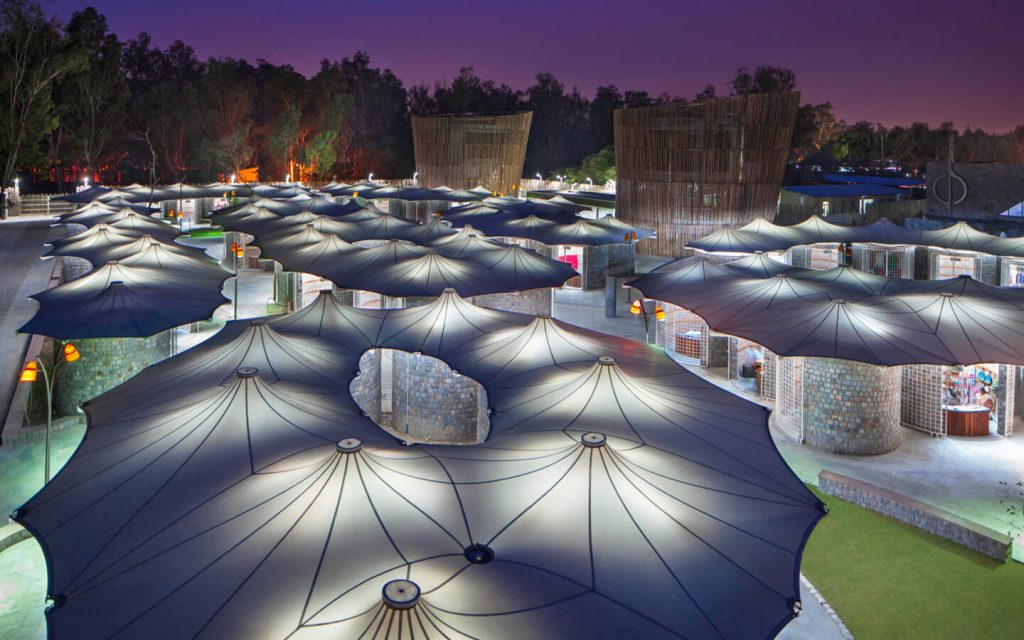Posted On March 20 2025
Total Post Views :- 584
In architecture, the balance between legacy and newness is crucial. At Elev8 2025, Sourabh Gupta, Principal Architect at Studio Archohm, embodies this philosophy, merging design excellence with social responsibility. He provided an in-depth look at his practice, sharing insights into public space projects, urban interventions, and architectural pedagogy that have defined his journey.
Rethinking Public Spaces
Sourabh Gupta takes a different direction from the conventional paradigm of urban development in which architecture is not always about creating landmarks but is instead refined, functional, and site-sensitive. His firm, Studio Archohm, encompasses a broader commitment to designing public spaces that are both aesthetically pleasing and inclusive, interactive, and socially meaningful. His use of the term public space is intentional, as a key characteristic in his work is reconsidering how people behave in public space with one another.
Sourabh Gupta is critical of the overemphasis on creating iconic architecture, particularly in urban life. He insists on the need for us to return to the design of places that embrace the complexity of urban life by uniquely engaging with the place and blending with the city rather than dominating it. His work on government projects further reiterates that conventions, especially in the public sector, can be both budget-conscious and creative while deploying an intention approach, i.e., public art, community interest designs, and impactful design.

Dilli Haat
An important project of Sourabh Gupta’s career as a designer is Delhi Haat, an urban government intervention that connects traditional craft and modernity within urban life. Completed in 2005, the Delhi Haat project brought a scaled approach to refined, human-focussed public space design using materials from, or representative of, the local area, like stone from Delhi. Delhi Haat’s success is offering artisan space, tourist space, and all-around interest and all patterns of imaginative design.
Storytelling & Architecture
Merging architecture and storytelling, Sourabh Gupta has designed more than ten experience centers and museums in India, including one for Jay Prakash Narayan, and exhibitions on socialism and cultural narratives. He often reinterprets the role of architecture in storytelling, using the design process to craft the visitor’s experiences, control light, and help create an interactive learning experience. He believes museums should not be static institutions of history, but dynamic public spaces that foster community engagement. His designs include sunken forms, open-air amphitheaters, and immersive exhibits that allow architecture to engage in storytelling.

Urban Renewal
Sourabh Gupta’s work goes beyond buildings, it encompasses entire urban ecosystems. For example, one of his ambitious projects included revitalizing Lucknow’s historic center, in which once-neglected public sectors were transformed into viable cultural hubs. In Lucknow, he and his team worked toward establishing disjointed monuments, rehabilitating slum areas, and creating areas that encouraged pedestrian movement over vehicular traffic. A similar approach was taken in Agra’s Taj Mahal district, as he and his team reconceptualized the visitor experience, and restructured the public sector around the monument. Instead of focusing only on moving foot traffic toward the Taj Mahal, they also activated the surrounding heritage sites, provided an organized marketplace, and paved routes for pedestrian use. Such methodology turned the entire district into a meaningful historical and cultural experience.
Infrastructure Projects
Sourabh Gupta reflects on his work on the design of metro stations in Mumbai. Unlike other architects known for their spectacular or iconic buildings, he forgoes eye-catching designs and executes architecture that fulfills its purpose and is efficient. He believes that architecture should act on behalf of the public, not confront the public. Moreover, transit buildings should function appropriately, with adequate light, and fit well in the urban environment. He believes that architecture has an ego-driven notion attached to it while proposing that buildings can be simple and meaningful.

Future of Studio Archohm
For Sourabh Gupta, architecture is far more than the act of construction, it creates a space in which emerging communities may organize, ideas invent themselves, and design consciousness becomes collective. His practice oscillates between large, urban works and residential detail work, ensuring his team remains flexible and creatively invested. Studio Archohm continues to be a part of mentoring new architects, collaborating with artists, and exploring experimental designs that challenge conventional practice. The firm continues to move forward, in this effort, to produce architecture that is contextual, sustainable, and wholly human-centric, which has become Sourabh Gupta’s practice philosophy.